A Self-Assessment Guide for Health Care Organizations - IFC
A Self-Assessment Guide for Health Care Organizations - IFC
A Self-Assessment Guide for Health Care Organizations - IFC
Create successful ePaper yourself
Turn your PDF publications into a flip-book with our unique Google optimized e-Paper software.
Measurable Element Look <strong>for</strong> Score Observations<br />
What is required<br />
4) Those responsible <strong>for</strong><br />
governance regularly<br />
receive and act on reports<br />
of the Quality<br />
Improvement and Patient<br />
Safety Program.<br />
How is this element<br />
assessed<br />
Leaders review the quality of<br />
clinical and non clinical services on<br />
a regular basis, e.g. at least<br />
quarterly. Action is taken that is<br />
supported by data and objective<br />
measures of per<strong>for</strong>mance. Cost<br />
effectiveness is also part of this<br />
review. Leaders track clinical audit<br />
results and take actions as<br />
indicated.<br />
There is a defined process <strong>for</strong><br />
notifying leaders when a sentinel<br />
event has occurred and there is<br />
evidence that they are actively<br />
involved in resolving such situations.<br />
0 5 10 Why did you give this score<br />
........................................................<br />
........................................................<br />
........................................................<br />
........................................................<br />
........................................................<br />
........................................................<br />
........................................................<br />
5) There is a training<br />
program <strong>for</strong> staff that is<br />
consistent with their role in<br />
the Quality Improvement<br />
and Patient Safety<br />
program.<br />
A training plan (which may be a<br />
one-page table) outlines the<br />
quality training <strong>for</strong> different<br />
categories of staff. For instance,<br />
leadership receives training in<br />
quality awareness, management<br />
indicators and data <strong>for</strong> decision<br />
making, general staff are provided<br />
basic quality/safety awareness<br />
training, and staff involved in<br />
quality committees/teams receive<br />
more in-depth training on quality<br />
improvement methodologies.<br />
........................................................<br />
........................................................<br />
........................................................<br />
........................................................<br />
........................................................<br />
........................................................<br />
42 <strong>IFC</strong> <strong>Self</strong>-<strong>Assessment</strong> <strong>Guide</strong> <strong>for</strong> <strong>Health</strong> <strong>Care</strong> <strong>Organizations</strong>


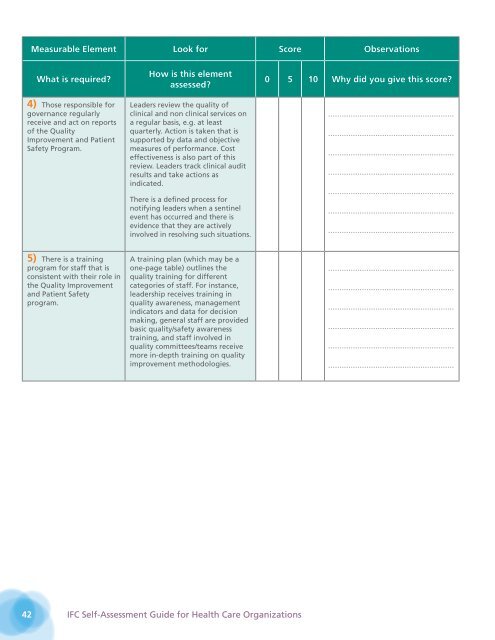
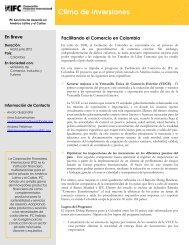
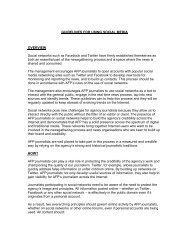
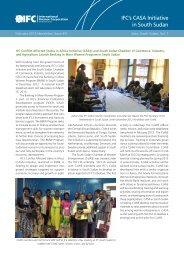

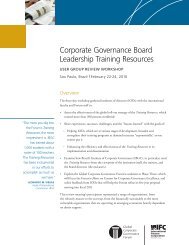


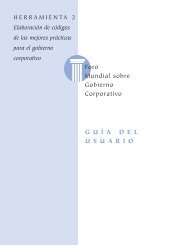

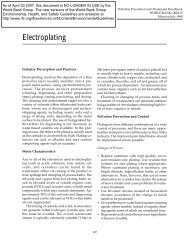

![Print a two-page fact sheet on this project [PDF] - IFC](https://img.yumpu.com/43449799/1/190x245/print-a-two-page-fact-sheet-on-this-project-pdf-ifc.jpg?quality=85)


